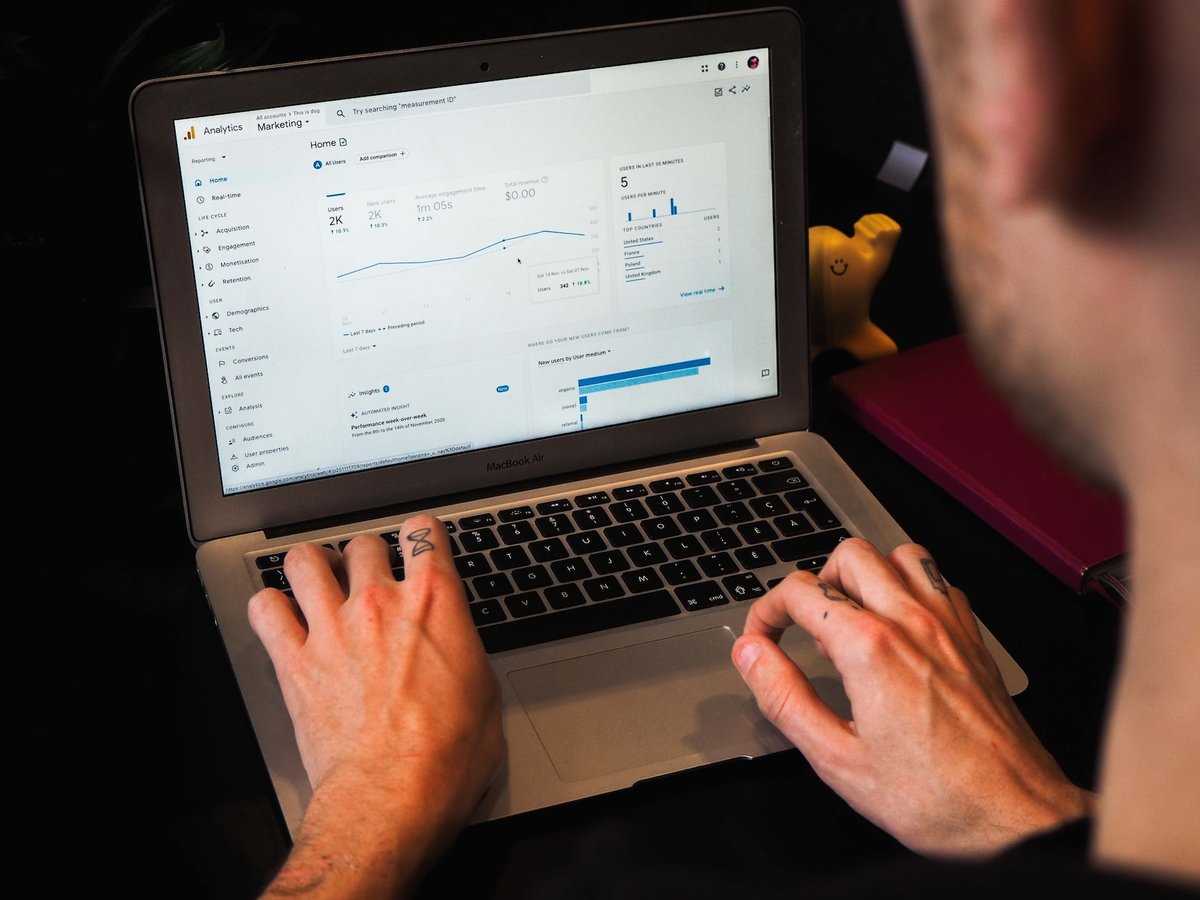How to Build Audience Personas For Your Small Business’ Content Marketing Efforts
What do the popular digital publishing brands like Buzzfeed, The New Yorker and Wired have in common?

If you were thinking that their content looks like it's targeted towards dedicated audience personas, then you guessed correctly. When you go through the content created by these brands, you immediately get an idea about who their target audience is. Whether you call them buyer personas, marketing personas, customer persona or audience personas, allocating some time to creating these personas can help you communicate more effectively with your audience. They can be especially useful for small businesses that want to expand their reach and acquire new audiences through their content marketing techniques.
Why should my small business focus on content marketing?
Before we get into the importance of building an audience persona for your small business, we want to share some recent data we compiled via a survey to small business owners and managers about their content marketing efforts.
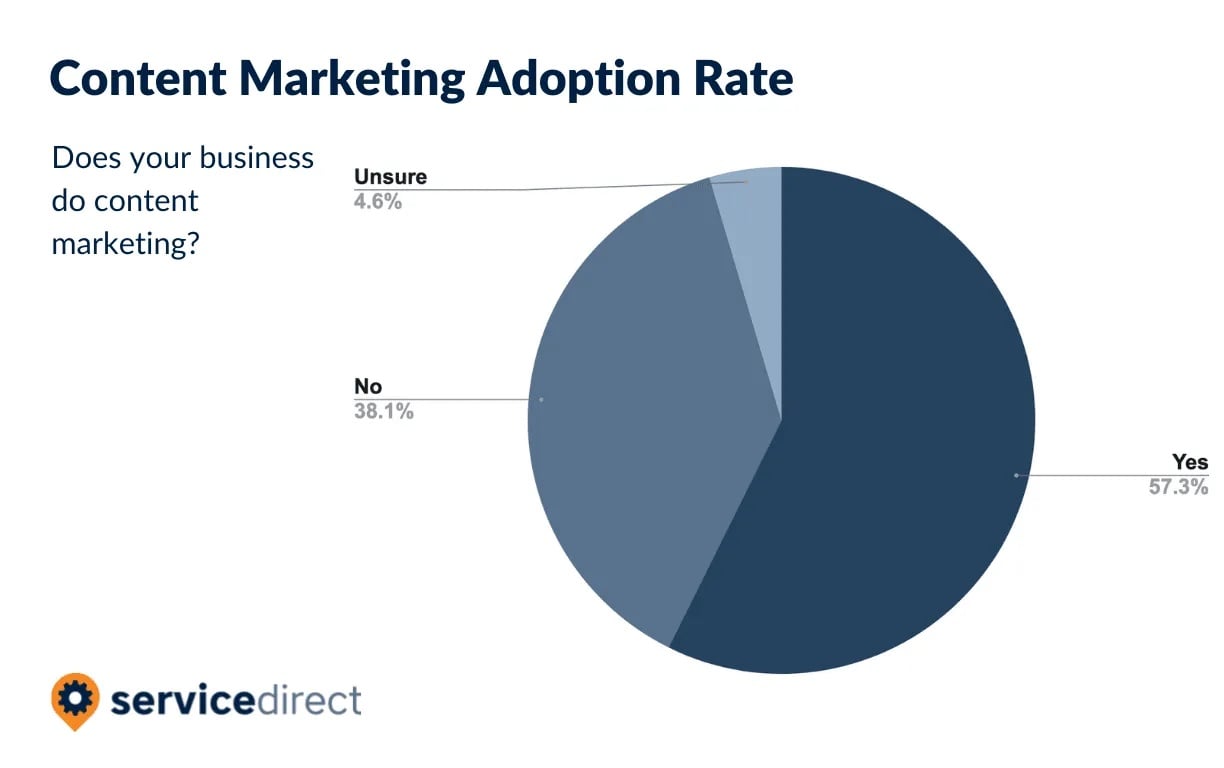
To start, almost 40% of small businesses do no content marketing at all. If you’re looking to build your business and begin gaining market share, clearly just being willing to get your brand out there can put you ahead of your competition!
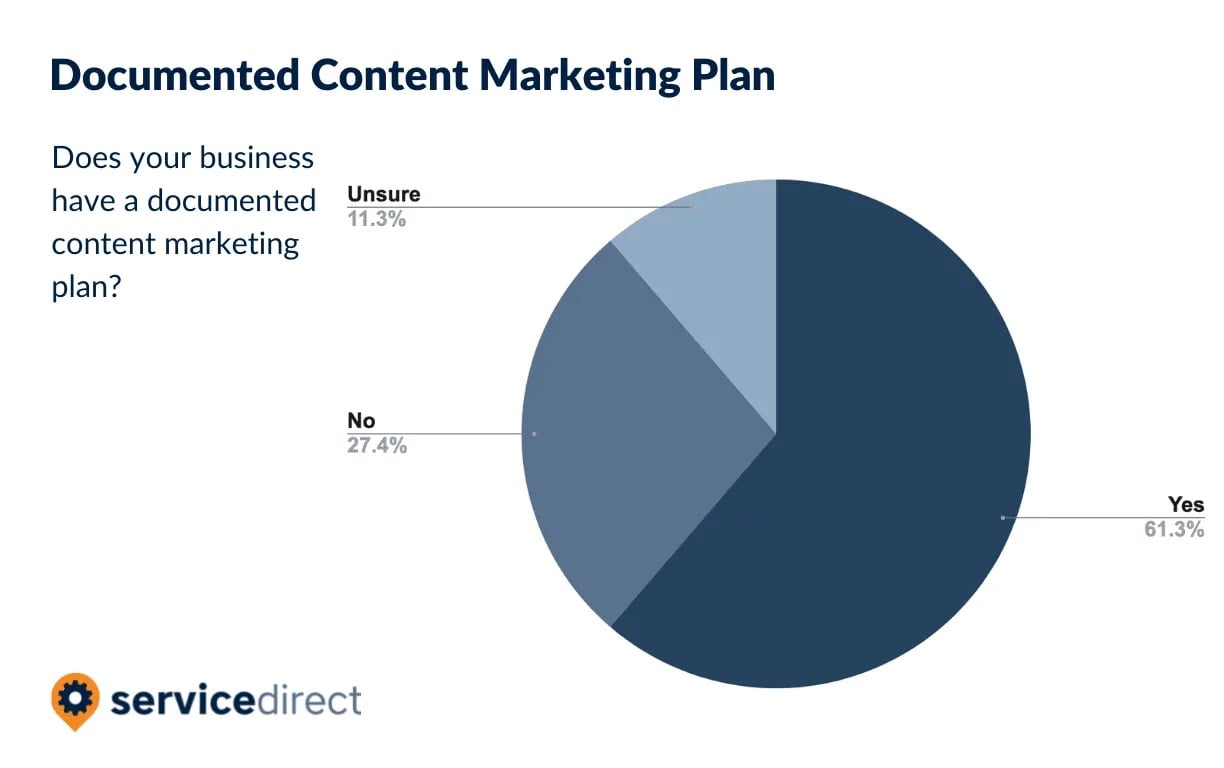
Even more surprising, when looking at small businesses that do content marketing, only 61% report having an actual plan. You intuitively know this, but perhaps you need to hear it:
If you want to reach your goals, you need a plan.
That’s true in virtually every facet of life, and it’s most definitely true when it comes to successfully growing your small business through content marketing. And when it comes to your marketing plan, one of the foundational pieces should be understanding who your target audience is.
In this article, we’ll tell you everything you need to know about building audience personas, from tips on creating them to the benefits of using them to guide your digital marketing efforts.
What are audience personas?
Audience persona refers to the detailed description of an individual that best represents your target audience. Although this individual is fictional, the people who are researched to build this persona are very much real. So, why do we need audience personas? The fact is that it is not only difficult, but nearly impossible to know each of your prospects or customers individually. Creating audience personas gives you a better idea about your customer base, their behavioral traits, pain points, motivations, and more. This makes it easier for you to craft your marketing messages targeting them specifically.
Although there are no set types of audience personas, they can be informally classified into three different categories –
- Information Seeker is one who is looking for information to help them with their buying decision. They are most likely to research several different options before making a final decision.
- Decision Maker is one who possesses the ultimate authority when it comes to making purchase decisions.
- An Influencer is one who can sway the opinions of the other two (Information Seeker and Decision Maker) one way or the other. They are those who are very vocal with their opinions or possess expertise in the matter.
How does creating audience personas help your small business?
Every audience persona that you create for your small business will be based primarily on two things (although several other elements go into creating an audience persona):
- The information you get on them.
- How they intend to use the product/service
You might already have some clever names for your audience personas like Frugal Fred or Practical Phillip, representing their buying habits. But these aren’t audience personas in the true sense. To build useful audience personas, you need to go beyond the clever names and get into the details. These personas can then be used to:
- Get a better picture of your target audience’s hopes, feelings, thoughts, expectations, concerns, and plans.
- Organize your target audience into segments.
- Send personalized messages to your target audiences to turn them into customers.
In this way, audience personas can help small businesses in running a more targeted marketing campaign. You can direct your content and marketing teams to develop the brand message around these audience personas. If you don’t have an in-house team, there’s always an option to outsource the work to a Content Marketplace, like Narrato Marketplace, where you can avail the services of thousands of expert freelance writers who are also experienced in creating content targeted at the right user personas. Whatever your process, the end goal is to create a cohesive brand campaign that increases your chances of converting your prospects into buyers.
How to create audience personas for your small business?
Now, we’ve come to the fun bit – building the audience personas. Here is a step-by-step guide on creating audience personas for your small business.
Step 1: Gather demographic information
The first thing you need to do is collect demographic information about your target customer base. This information will consist of distinctive identifiers of your target audience like their gender, age, location, nationality, occupation, income, etc. This information can be collected through online surveys, in-person interviews, or phone calls. Besides the general questions, certain other things you can ask about them are:
- Their education level
- The industry they’re working in
- Career-related goals
- Their role in the company
- Their pain points
- Preferred social media platform
- Interests
These questions can vary depending on your product/service. For instance, if yours is a tech company, you can consider asking questions about their tech expertise.
Step 2: Identify the motivations and pain points of your target audience
In this step, you’ll distill the information you gathered during those interviews to understand your audience’s pain points and motivations. Their goals and motivations can either be professional or personal. As for the pain points, you need to understand any problems they are faced with. What prevents them from reaching their goals? What’s keeping them up at night?
Now, you might be wondering – where do I gather all this information from? One way is to get your customer support team or sales team to conduct interviews. Besides this, you can also engage in social media sentiment analysis and social listening to get a better grasp of their motivations and pain points.
Step 3: Monitor their online behavior
While social listening will help you get a better grasp of their motivations and pain points, you would still need something to dig a little deeper. To develop well-rounded audience personas, you need to understand their online behavior too.
- What are the people searching for?
- How are they navigating websites?
- What captures their interest?
Find out how much time new users spend on your website, what kind of content they engage with, around what time does your website traffic peak, and so on. All of this will give you a fair idea of your target audience's online behavior.
Step 4: List the commonalities
Now, your research process is complete, and you have a lot of information and raw data about your current and potential customers. So, now it’s about bringing the persona together so that it’s easy for everyone to understand. In this step, you have to look for commonalities and patterns in the collected data to build an archetype. This will then be the basis of building your audience personas.
Step 5: Segment your audience
After you’ve researched the commonalities, the next thing you need to do is divide them into segments or groups. This will make it easier to separate audience personas. For instance, let’s say you own a small tech company and your target audience comprises two kinds of people:
- Younger individuals looking to try new technologies.
- Older people who might have very specific and minimal needs.
You know that you cannot use the same sales approach for both these groups. By segmenting your audience personas, you’ll be able to tailor your marketing message to reflect their needs.
Step 6: Build a story around the audience persona and give it an identity
Now, you’ll have a few different audience personas for your business. But these are just built around characteristics. It’s important to ensure that your audience personas reflect real people, and real people always have a story. In this step, you have to compose a story for each segment that you identified. You would essentially be giving them a name, face, and identity. This example from Buyer Persona Institute can also be useful for building your own audience persona.
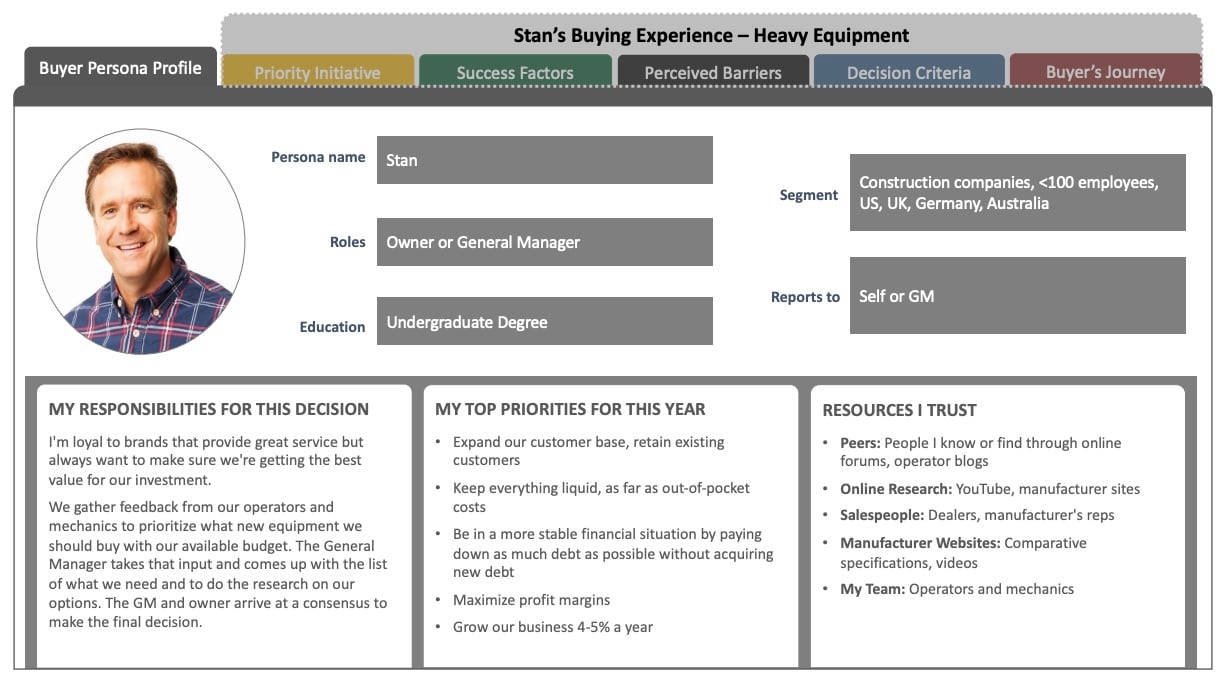
Step 7: Determine how your product/service helps your audience
You now have well-rounded audience personas which have distinct identities. You also know their motivations, challenges, and major pain points. With this information, you would now have to decide how to pitch your product/service in a way that addresses their motivations and pain points. By providing the right solutions for their issues, you’ll get an opportunity to build a relationship of trust with them. This will be instrumental in ensuring brand loyalty in the long run.
Step 8: Create your value propositions around these audience personas
In the last step, you’ll be bringing the value propositions of your small business on the same page with the audience personas. The value proposition is more than just a product/service description. It is a promise of delivering some value to your customers. Here’s how you create value propositions:
- Identify the main problem of your customer.
- Identify the benefits of your products/services.
- Connect the value of your products/services to the customer’s problem.
- Differentiate your value proposition (what makes it unique)
Test your audience personas in action
Once you have created your audience personas, you can test them out to see how they’ll help increase your marketing performance. Here’s how you can go about doing that –
1. Use the audience personas to identify prospects: This will allow you to personalize your pitches and marketing campaigns in a way that will get them to convert.
2. Nurture the leads obtained through CRM: Use your CRM system to identify different audience personas in the customer list. You can then alter your sales and marketing communications to align with these different personas.
3. Find the right marketing channel to push the target audience towards purchase: Once you have your audience personas, you’ll also be able to find out which marketing channels they use most frequently. You can then look at marketing techniques like influencer marketing to target and engage these personas.
Wrapping Up
By now, it must be evident that audience personas make the foundation of any marketing campaign. They essentially help you understand your prospective customers and their needs. By creating well-rounded audience personas for your small business, you’ll be able to guide your marketing campaigns in the right direction and also communicate with them more effectively. Keeping your audience persona in mind while creating content will also ensure that everything remains consistent, from the marketing channels you use to your brand voice.
Oh yeah, remember that survey we conducted about small business content marketing efforts?
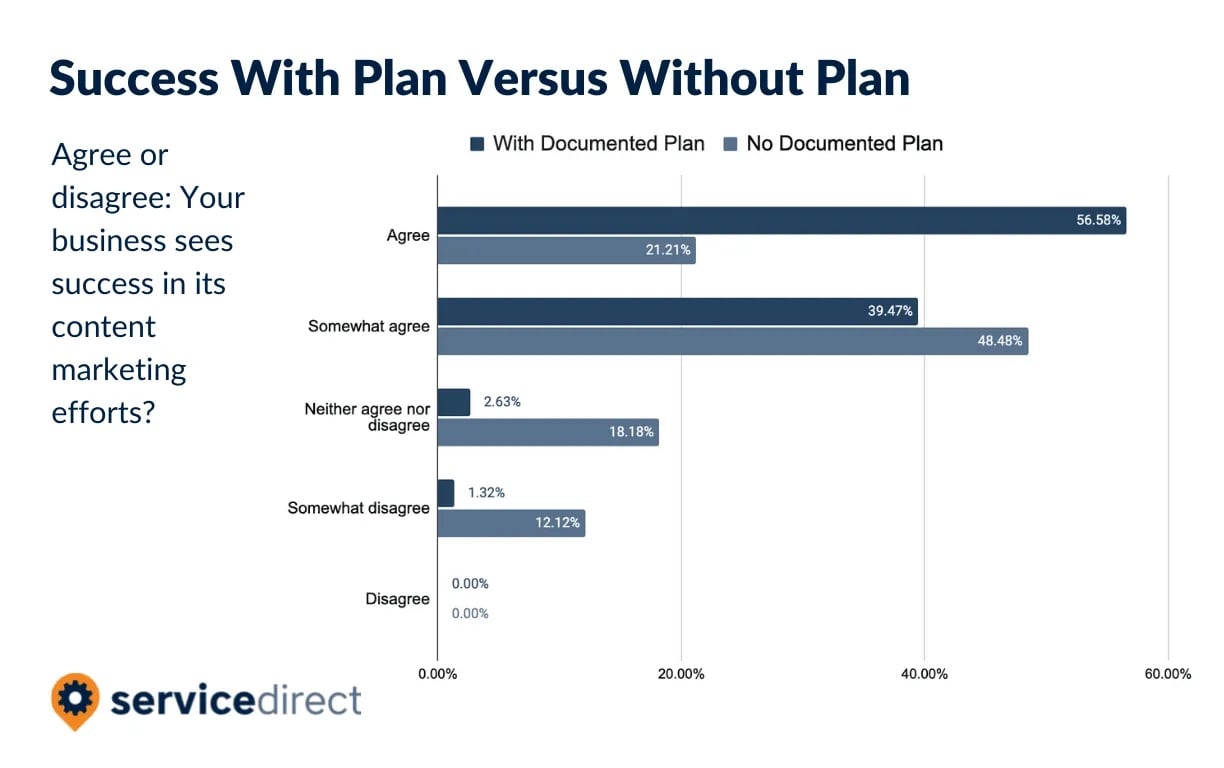 When we asked respondents if their content marketing efforts were successful, the greatest determinant of success was whether or not they had an actual plan. Building an audience persona should be a crucial part of that plan, so we hope these tips help you put together an action plan that can help you get new customers!
When we asked respondents if their content marketing efforts were successful, the greatest determinant of success was whether or not they had an actual plan. Building an audience persona should be a crucial part of that plan, so we hope these tips help you put together an action plan that can help you get new customers!



